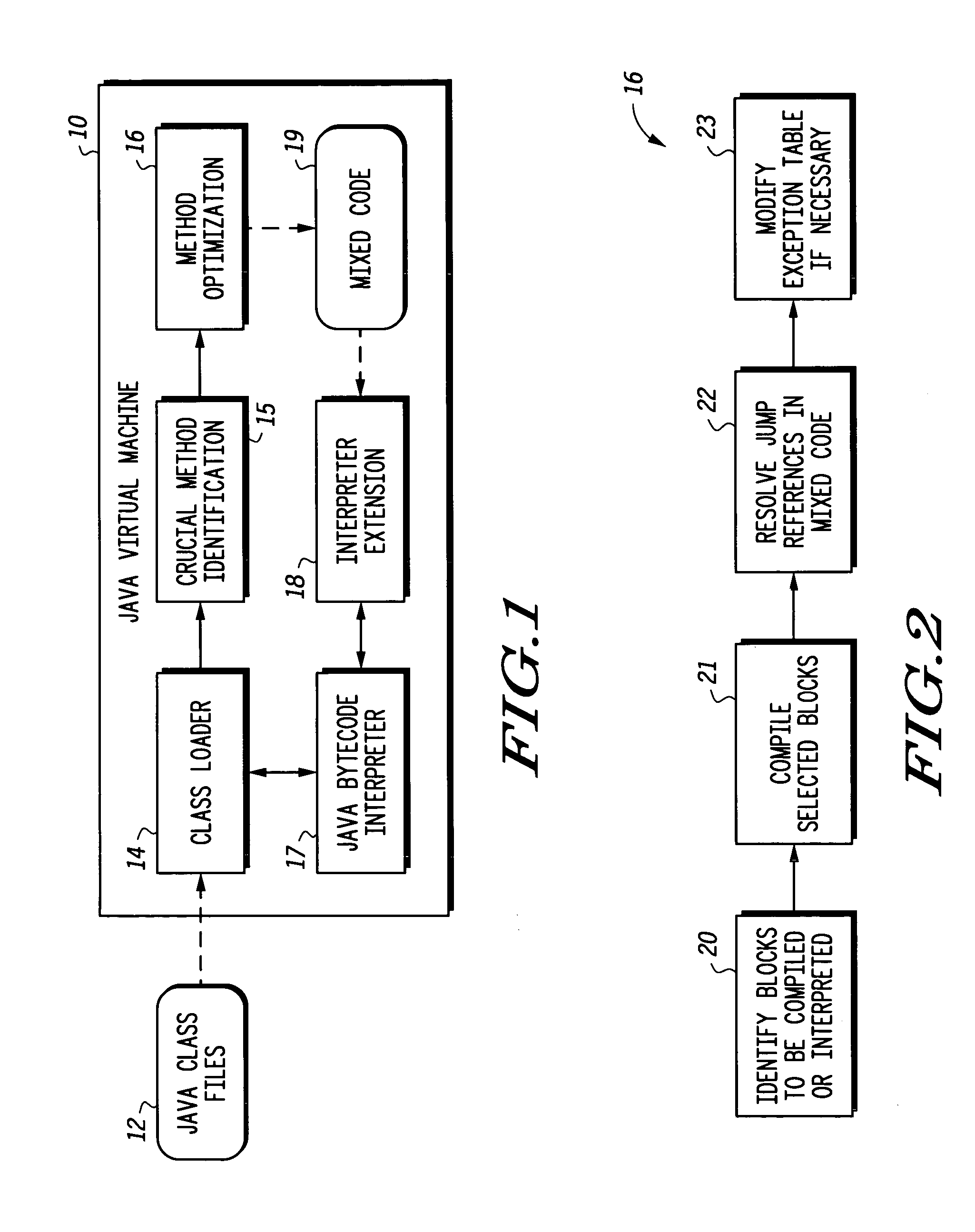Method and apparatus for selectively optimizing interpreted language code
a technology of interpreting language and code, applied in the field of interpreting language, can solve the problems of slow speed of interpretation, inability to efficiently apply traditional java technology for embedded software development, and difficulty in interpreting software code written in an interpreted language to breach the security of the host system
- Summary
- Abstract
- Description
- Claims
- Application Information
AI Technical Summary
Problems solved by technology
Method used
Image
Examples
Embodiment Construction
[0014]In one embodiment of the present invention, an interpreted language (e.g. Java) is selectively optimized by partitioning the interpreted language code into a plurality of blocks based on the complexity of each of the interpreted language instructions. In one embodiment of the present invention, each of the plurality of blocks is identified as either a block to be compiled into native code if the block is simple, or a block to be interpreted (e.g. left as Java bytecodes) if the block is complex. In one embodiment of the present invention, a simple instruction is a Java bytecode that does not have any dependencies on Java VM 10 services (e.g. memory allocation, garbage collection, etc.). The compiled and non-compiled (i.e. interpreted) blocks are appended to form in-line mixed code (e.g. 99 in FIG. 6) that contains both native code (e.g. 90-92) and interpreted language code (e.g. 93). It is this in-line mixed code that is executed at run time. Thus, no JIT compiler is required a...
PUM
 Login to View More
Login to View More Abstract
Description
Claims
Application Information
 Login to View More
Login to View More - R&D
- Intellectual Property
- Life Sciences
- Materials
- Tech Scout
- Unparalleled Data Quality
- Higher Quality Content
- 60% Fewer Hallucinations
Browse by: Latest US Patents, China's latest patents, Technical Efficacy Thesaurus, Application Domain, Technology Topic, Popular Technical Reports.
© 2025 PatSnap. All rights reserved.Legal|Privacy policy|Modern Slavery Act Transparency Statement|Sitemap|About US| Contact US: help@patsnap.com



